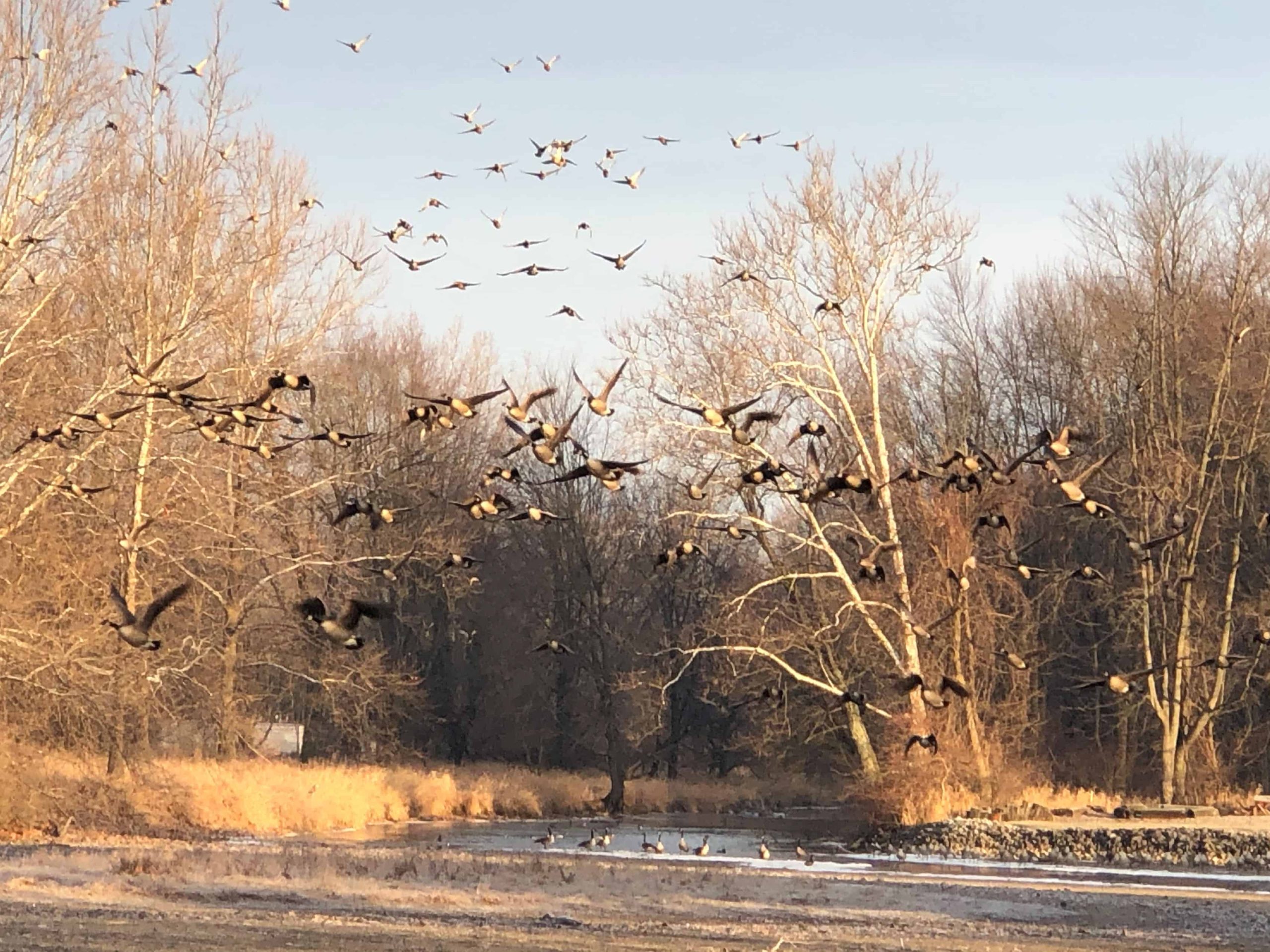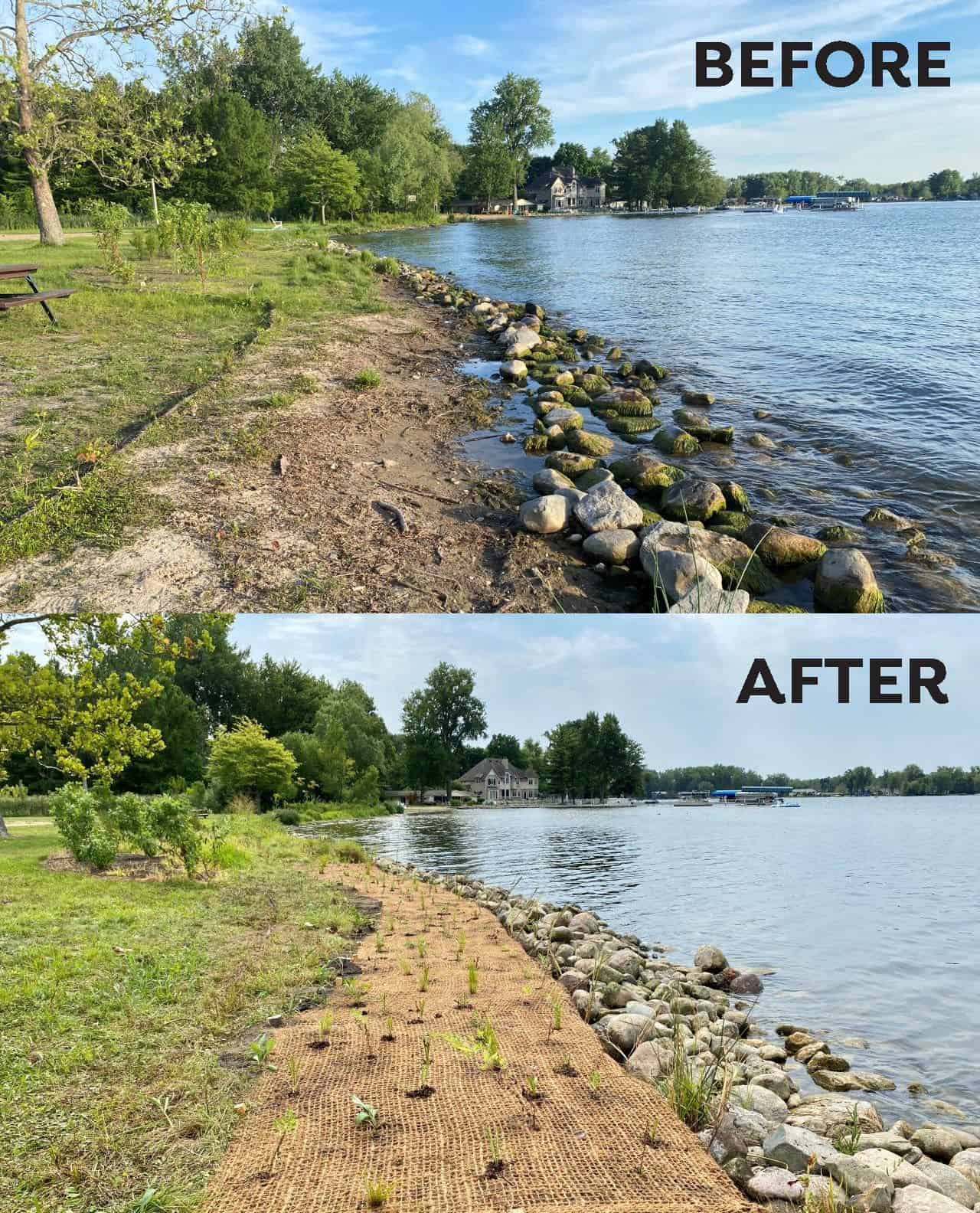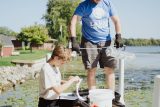Ask Lyn: How Do Native Plants Deter Geese?
Tuesday, January 26, 2021
Dear Lyn,

I’ve read that a buffer of native plants along a shoreline, like the one TWF installed at Winona Lake Limitless Park, can help deter troublesome geese activity. But this winter, I’ve often seen crowds of geese at that site. Does that mean the plants aren’t working?
Thanks,
Wondering About Waterfowl in Winter
_________________
Dear Wondering,
There are a couple of reasons why you may be seeing more geese right now.
First, change takes time, and so do plants! It hasn’t quite been two years since TWF brought together community partners to install 500’ of healthy shoreline at Winona Lake from the edge of the public swimming beach to Cherry Creek. In February of 2019, we replaced turf grass with glacial stones, and in May, we planted a buffer of native shrubs, grasses, and flowers.
As you read, one of the goals of the Winona Lake shoreline project was to discourage troublesome populations of exotic, invasive Canada Geese, who leave large quantities of droppings that can cause sickness in humans, like diarrhea–among other issues. Turf grass and an open shoreline are like a “welcome mat” for geese, who prefer easy access to the lake and a clear view of the horizon. Taller vegetation makes it hard for them to see predators coming.

However, plants, particularly shrubs and trees, often need several years to really grow strong and established. If plants encounter challenges along the way, especially while they’re young and vulnerable, that can slow things down. The spring of 2020 brought heavy rains and flooding to our area, damaging part of the shoreline and washing away a portion of our barely-established native garden. Of course that presented a challenge, but with the help of wonderful volunteers from United Way and Zimmer Biomet, we were able to replant, and we can’t wait to see the shoreline spring to life again in a few months!
For now, though, it’s winter, and this season also plays a role in increased geese activity on the shoreline. While our native plant buffer only includes perennials–plants that come back year after year–the leaves and stems of some plants, like flowers, die back during the cold months, and others lose their foliage. When all plants are “up,” they create a living wall; however, winter provides a clearer view.
Now here’s the good news: according to our partners at the Lilly Center for Lakes and Streams, yes, those plants are working!
The Lilly Center was a partner from the inception of the Healthy Shoreline project at Winona Lake Limitless Park. The kind of research that was needed to detect and quantify any changes in the ecology after our shoreline installation fit perfectly with their mission.
For three consecutive summers, a team from the Lilly Center conducted surveys along the shoreline and in the adjacent grassy area of the park. They began weekly monitoring in the summer of 2018, prior to the restoration project, and again in 2019 and 2020, counting goose droppings and surveying the aquatic plants in the lake along the shoreline.
The final report of their surveys has just been completed, and here’s one highlight: in the two years since the healthy shoreline was installed, the number of geese and their droppings have decreased significantly. This is encouraging news for both water quality and human health! Watch for full results from that report, coming soon.
As our protective plant barrier continues to grow, we expect to see continued positive changes. Meanwhile, you can be part of the solution in any season. The simplest way to help? DON’T FEED WATERFOWL. If you live near a lake or pond, you can also plant a buffer of native vegetation to deter geese.
Check out Clear Choices Clean Water to learn more, and take the pledge today!
Thank you for protecting our lakes,
Be a Hero for Healthy Lakes!
Our lakes need help. Our lakes need you. You can volunteer on clean water projects, take an action pledge, attend an event, donate funds – there are so many ways to make a difference! Will you join us?



